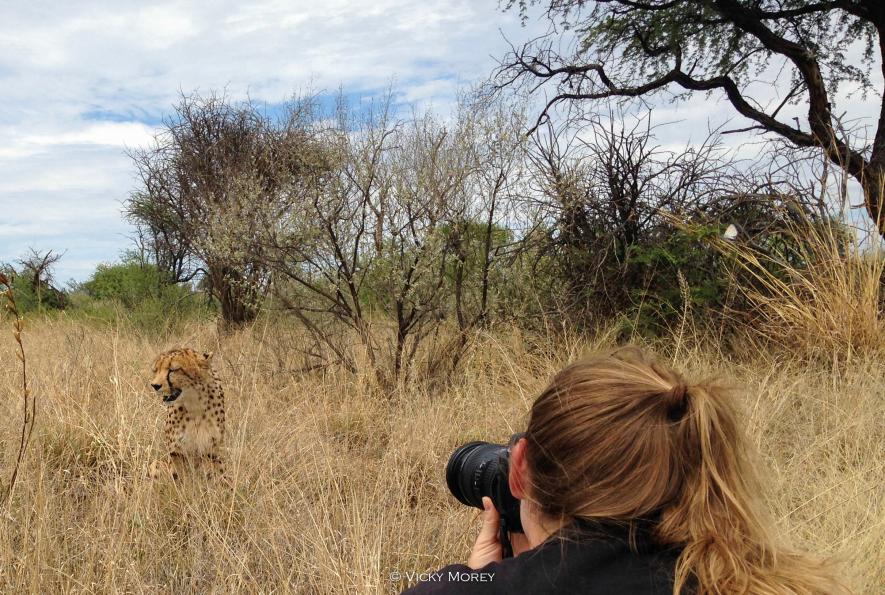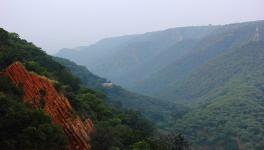Survey Begins for Potential Habitat for African Cheetahs in India

A survey to find the potential habitat to relocate the African Cheetah to India has begun. A team of researchers under the guidance of the Wildlife Institute of India (WII) has started the survey of protected forests to harbour the cheetahs, according to M K Ranjitsinh, former director of Wildlife Preservation of India
Ranjitsinh is part of a three-member expert committee, which was formed at the directive issued by the Supreme Court on January 28 this year in order to guide National Tiger Conservation Authority (NTCA), supervise the cheetah relocation process and submit a report in this regard to the apex court every four months. The other two members are Dhananjai Mohan, director WII, and the Deputy Inspector General (Wildlife) at the Ministry of Environment, Forest & Climate Change.
Cheetahs inhabited India’s grasslands till the 1950s before they were hunted to extinction in the country. Iran is the only country in Asia having the Asiatic Cheetah (Acinonyx jubatus venaticus), but it refused the species to India. The population of this species has come down from around 100 in 2007 to only 43 in 2016. The global population of cheetahs was estimated at nearly 7,100 individuals in 2016. After Iran’s refusal, India is now left with the only option to bring the feline from Africa.
The cheetah has been classified as vulnerable by the International Union of Conservation of Nature; it is listed under Appendix I of the Conservation of Migratory Species of Wild Animals (CMS) and Appendix I of the Convention on International Trade in Endangered Species of Wild Fauna and Flora (CITES). The Endangered Species Act also lists the cheetah as endangered.
“Though we have submitted our report to the SC, it got delayed due to COVID-19 pandemic. The survey too got procrastinated as the people avoided going into the field because of the virus scare,” Ranjitsinh told NewsClick.
A sum of Rs 2.5 crore has been sanctioned to WII by the Ministry of Environment, Forest and Climate Change (MoEFCC) for the cheetah project.
A WII report, authored by senior scientist and big cat expert YV Jhala and Ranjitsinh in 2010, analysed the probability of cheetah relocation in protected forests like Sanjay National Park, Dubri Wildlife Sanctuary and Guru Ghasidas National Park in Chhatisgarh, Kuno Palpur Wildlife Sanctuary and Nauradehi Wildlife Sanctuary in Madhya Pradesh; Kaimur Wildlife Sanctuary in Uttar Pradesh and Bagdara Wildlife Sanctuary in Madhya Pradesh as a continuous habitat; the Shahgarh landscape and Rajasthan Desert National Park in Jaisalmer, Rajasthan.
They recommended Kuno-Palpur and Nauradehi Wildlife Sanctuary in Madhya Pradesh and Shahgarh Landscape in Jaisalmer for the cheetah translocation adding that all the three sites require preparation and resource investments to commence an introduction program. Long-term commitment of political will, resources and personnel are required from the central and state governments to implement this project successfully, the experts stressed.
According to the report, the Kuno Palpur Wildlife Sanctuary is part of the Sheopur-Shivpuri forested landscape, with second largest area of 6,800 sq. km amongst the surveyed sites.
It was Sanjay National Park, Dubri Wildlife Sanctuary and Guru Ghasidas National Park that were the largest, covering over 12,500 sq. km where cheetahs continued to survive till after India’s Independence. But it was not a front-runner in the reckoning due to problems like low prey densities, probably due to poaching by tribal communities residing within the protected areas.
Contrary to this, Kuno-Palpur topped the chart because a lot of restorative investment has already been made here for introducing the Asiatic lions, something which has hit the roadblock since 2013. This protected area is estimated to have a current capacity to sustain 27 cheetahs, which could be enhanced to over 32 individuals by amalgamating adjoining forested areas (120 sq. km) to Kuno-Palpur and managing the surrounding 3,000 sq. km forested habitat as a buffer to the sanctuary. The location can accommodate dispersal of over 70 cheetahs.
The Nauradehi Wildlife Sanctuary (1197 sq km) in Madhya Pradesh, which is part of a contiguous forested landscape of 5,500 sq. km, has reasonable prey density and the area could support 25 cheetahs. The authors of the report also recommended the designation of 750 sq. km as a core area of the sanctuary and relocation of about 23 human settlements from the core with generous and adequate compensation. This would enable the site to support over 50 cheetahs as a source population, while the whole Nauradehi landscape could accommodate over 70 individuals.
SK Mandal, principal chief conservator of forests in Madhya Pradesh, beamed with joy saying that it would be a matter of pride for MP to have cheetahs in the state as the Kuno WLS has already been upgraded as a viable habitat for lion translocation with the shifting of all the villagers from it and expansion of grassland.
Ranjitsinh allayed any apprehension with regard to lions and cheetahs living together with some tigers too in the landscape. He said that this situation would not pose any conflict among the big cats.
The WII report found Shahgarh landscape on the international border in Jaisalmer district of Rajasthan also suitable for introducing the cheetah. The area does not pose any conflict with tigers. Owing to the reason that it is fenced along the international border, authors gave advice to fence it off by constructing another 140 km long chain-link fence, so as to encompass about 4000 sq. km of the habitat. Relocation of local people from 80 seasonally used human settlements was also recommended. Despite the fact that the region has less prey species diversity, the area could support 15 cheetahs and has the potential to sustain 40 cheetahs with further habitat management, they mentioned.
Arindam Tomar, chief wildlife warden of Rajasthan, told NewsClick, “The Shahgarh landscape has become vulnerable due to escalating tension between India and Pakistan as it is just situated on the international border of both the countries. The experts need to see if the cheetahs can be brought here amid such a volatile situation. There are issues with regard to less prey density, which also requires to be tackled.”
Ranjitsinh said, “If it requires, we will make all the efforts to make the selected habitat as the most suitable for cheetah survival and growth of its population in India. This flagship species will play a vital role in the conservation of its habitat, which is grassland and scrubland eco-system that is highly neglected in the country.”
NTCA had sought permission for the introduction of the African cheetah from Namibia last year as the court is monitoring the government’s ambitious project.
Founded in 1990, Africa-based Cheetah Conservation Foundation (CCF) in Namibia is celebrating its 30th anniversary in 2020, making it the longest-running and one of the most successful cheetah conservation organisation in the world.
Laurie Marker, founder and executive director of Namibia-based Cheetah Conservation Fund (CCF) said that she has offered to assist the committee of conservation experts appointed by the Supreme Court of India on a pilot programme to introduce the African cheetah to the landscape of India.
(Seema Sharma is a Chandigarh-based independent journalist who writes on environmental, social and gender issues)
Get the latest reports & analysis with people's perspective on Protests, movements & deep analytical videos, discussions of the current affairs in your Telegram app. Subscribe to NewsClick's Telegram channel & get Real-Time updates on stories, as they get published on our website.
























